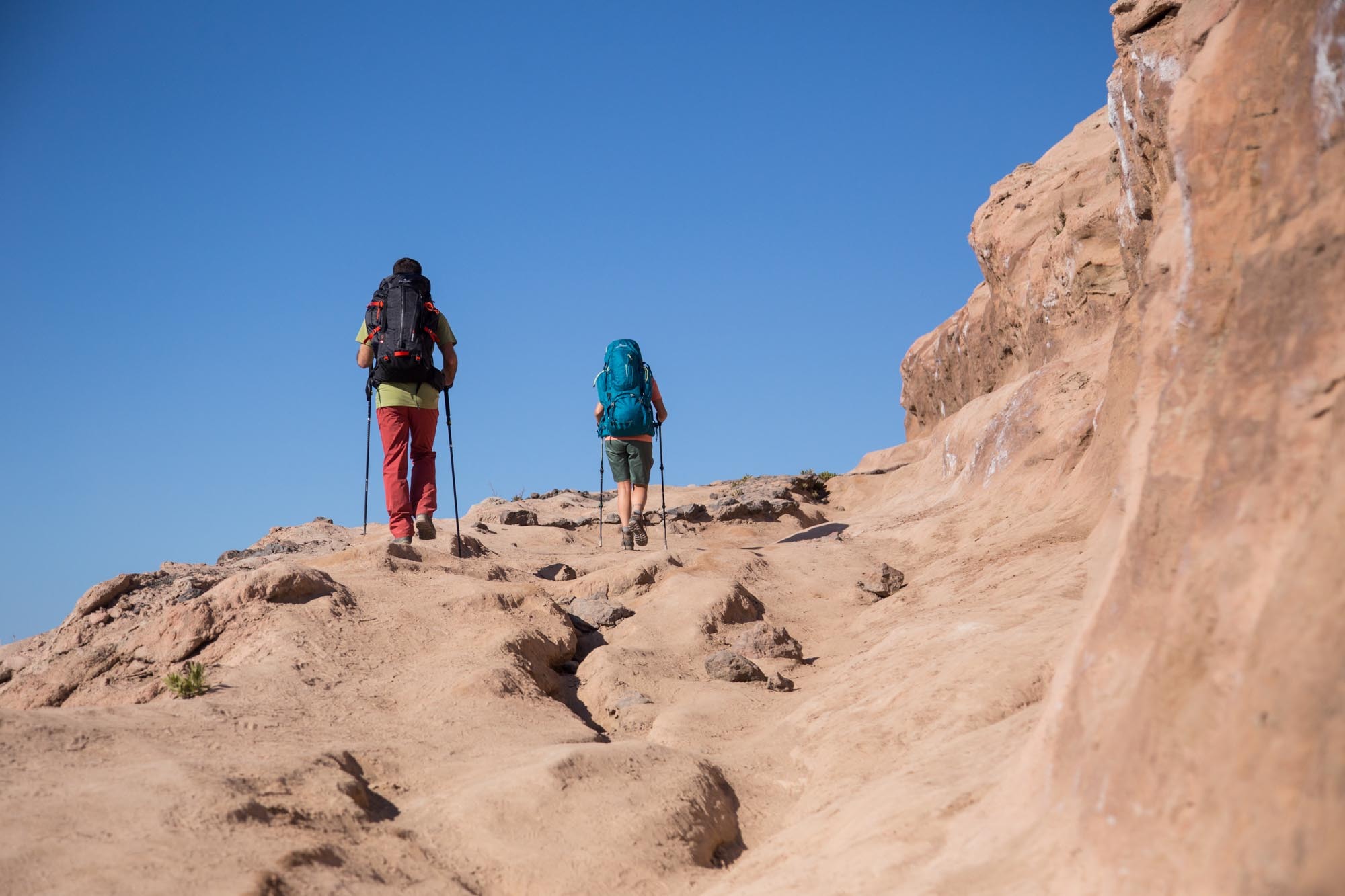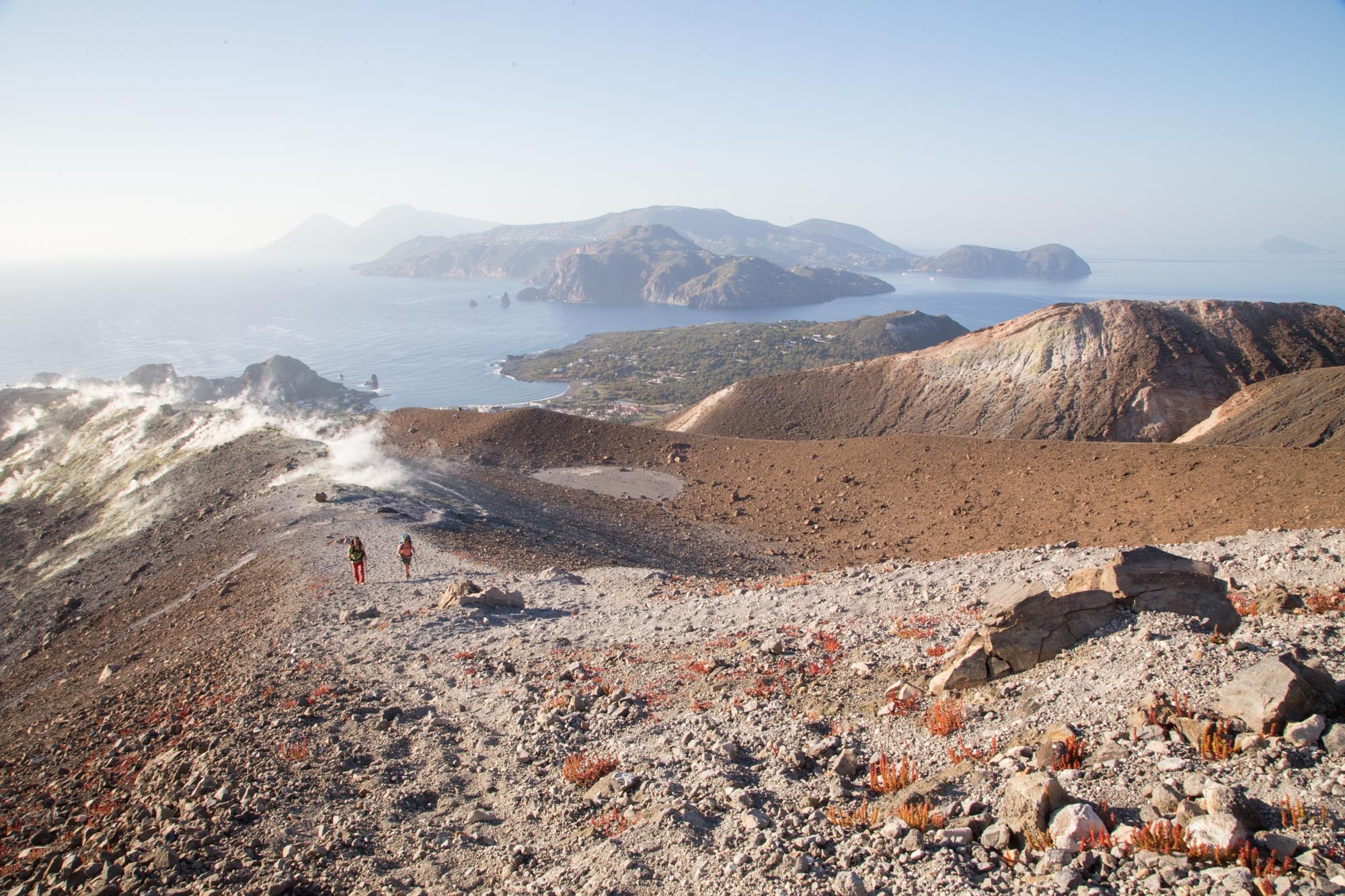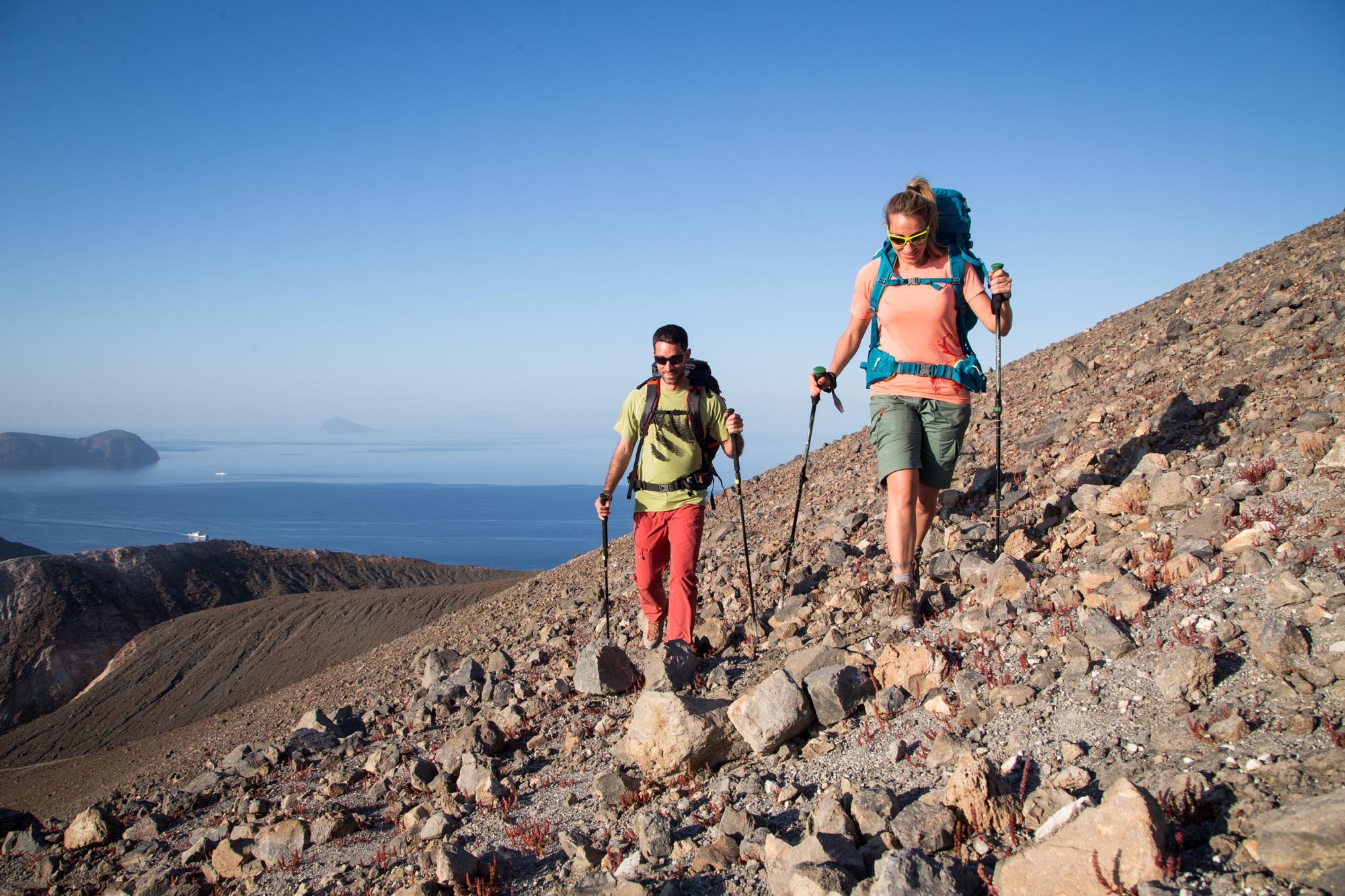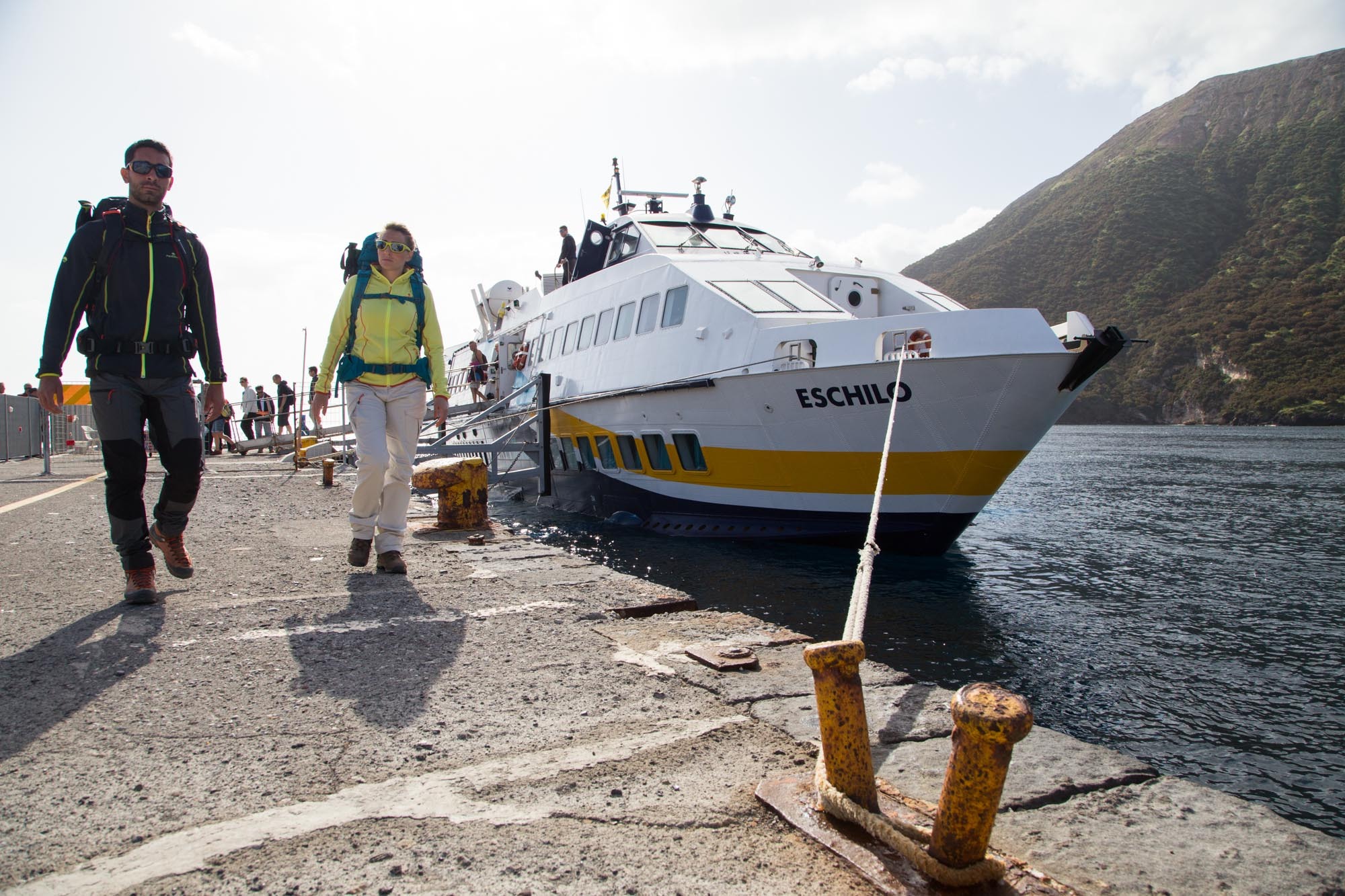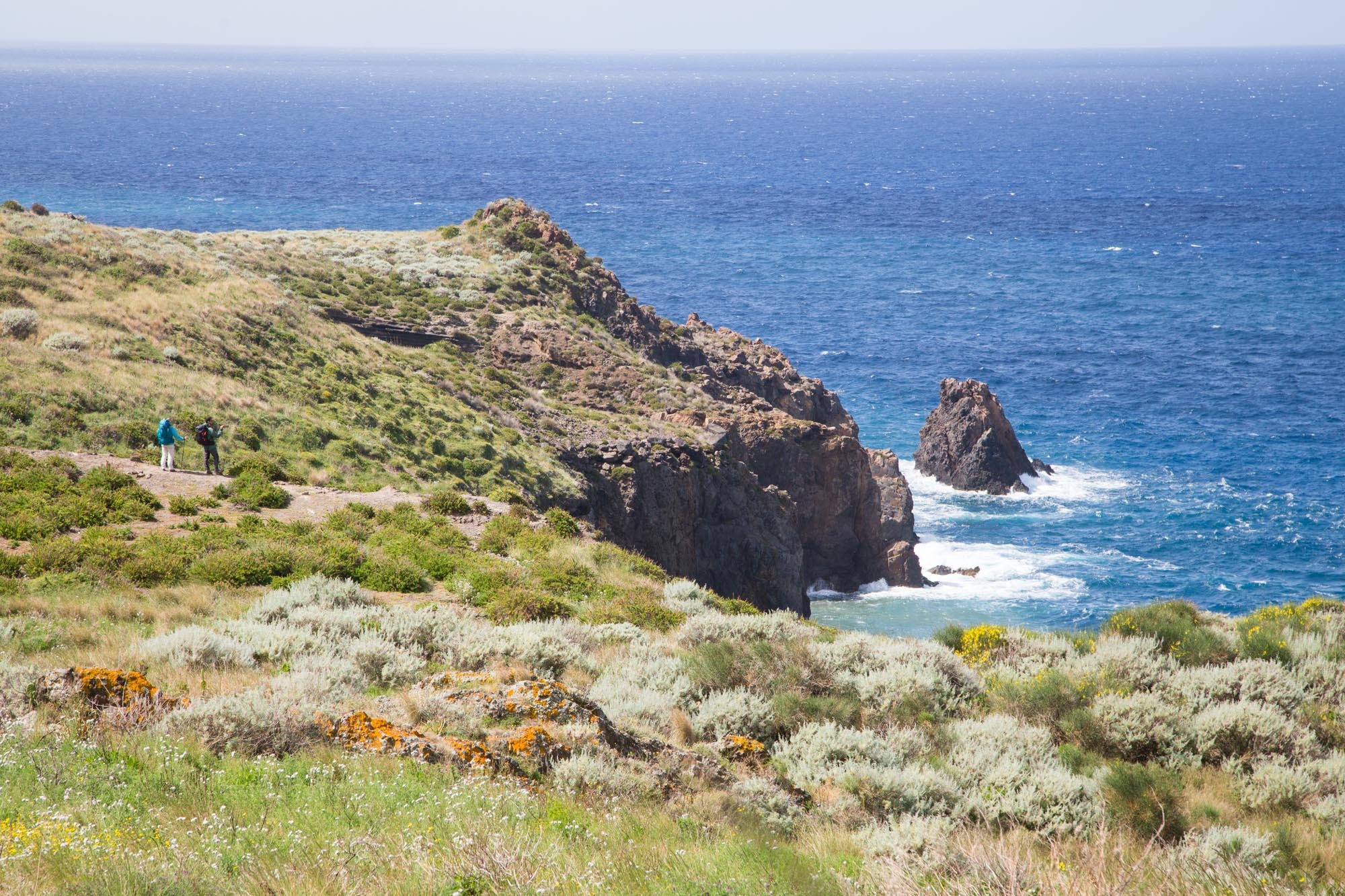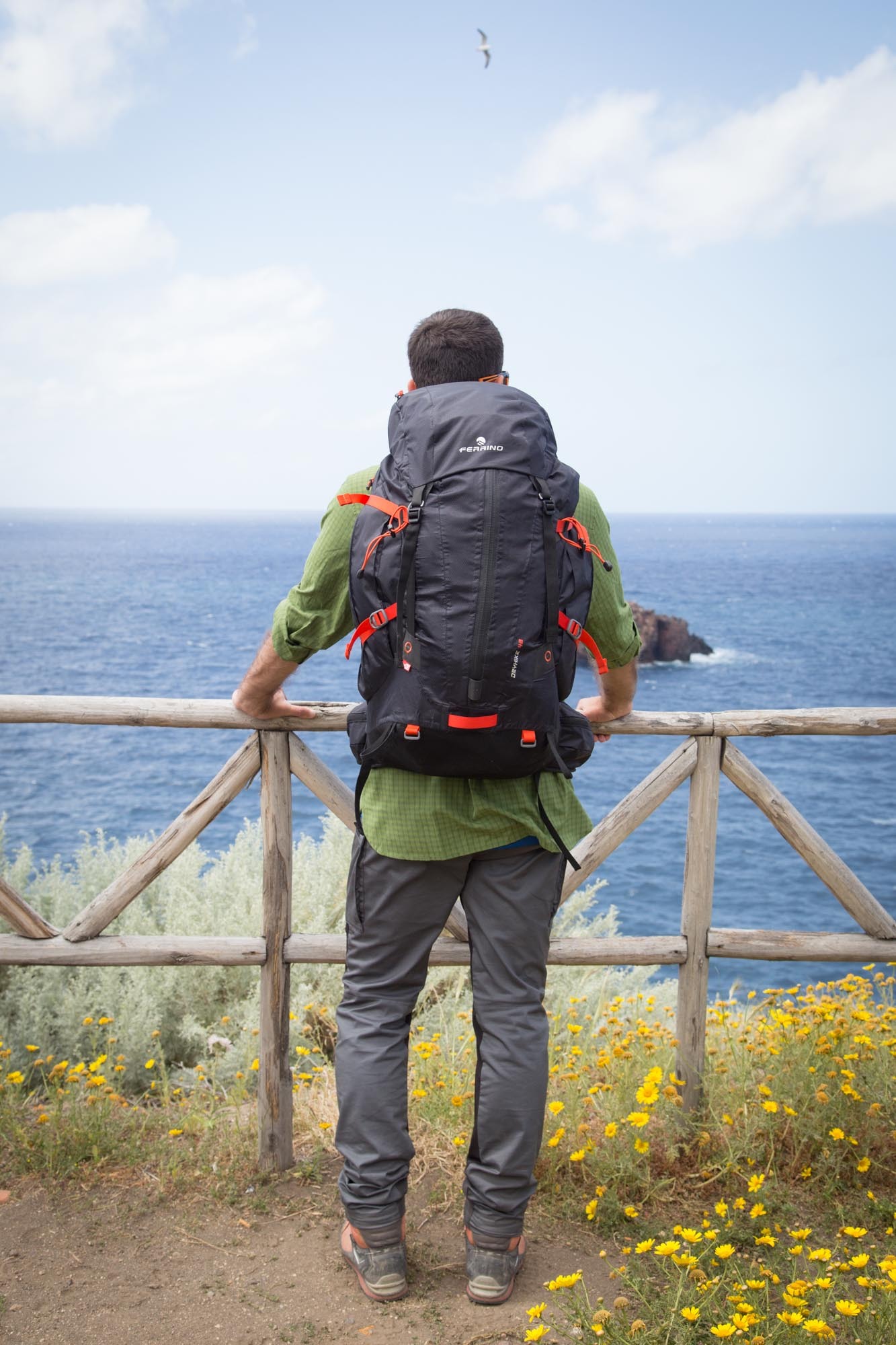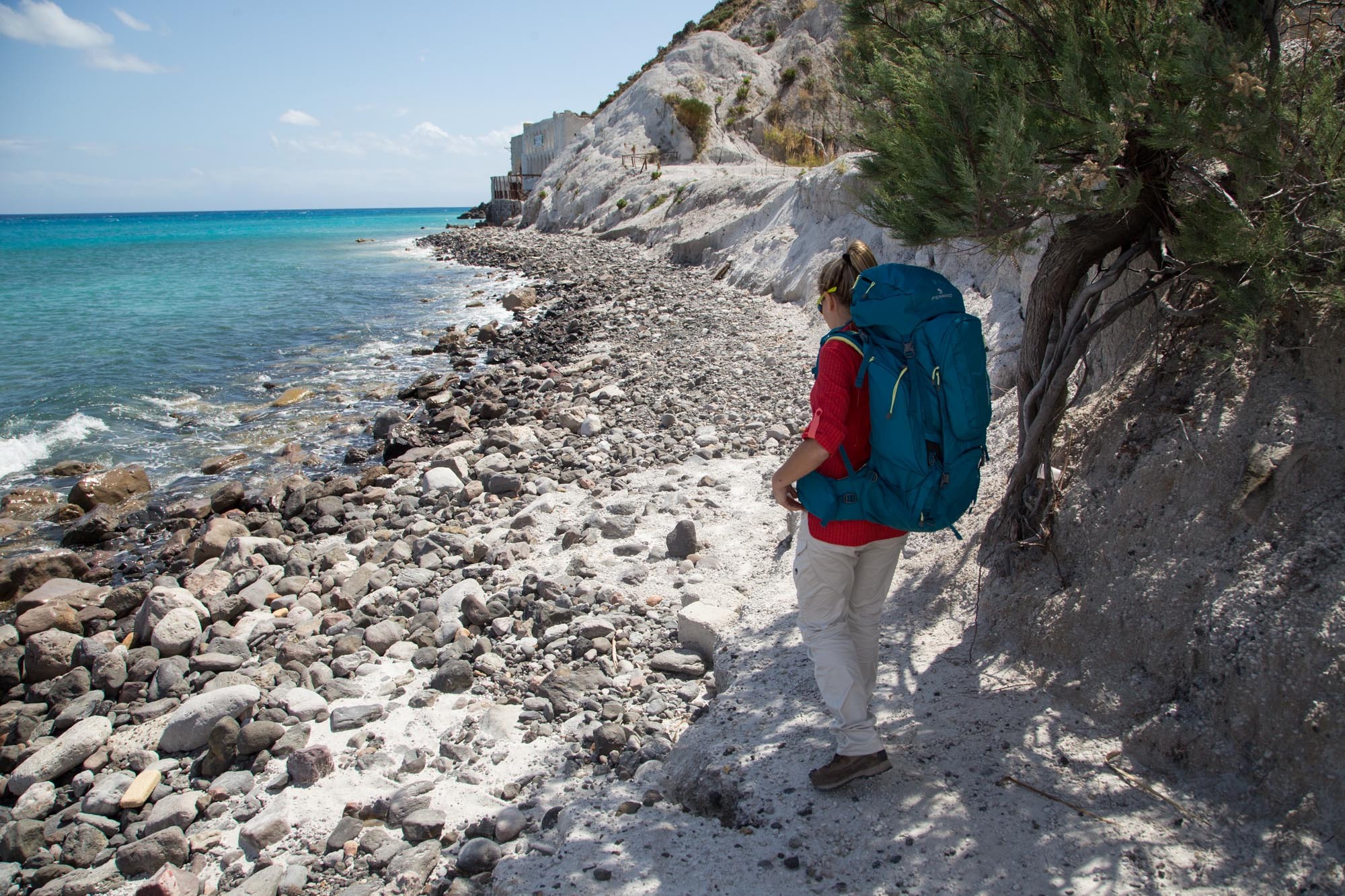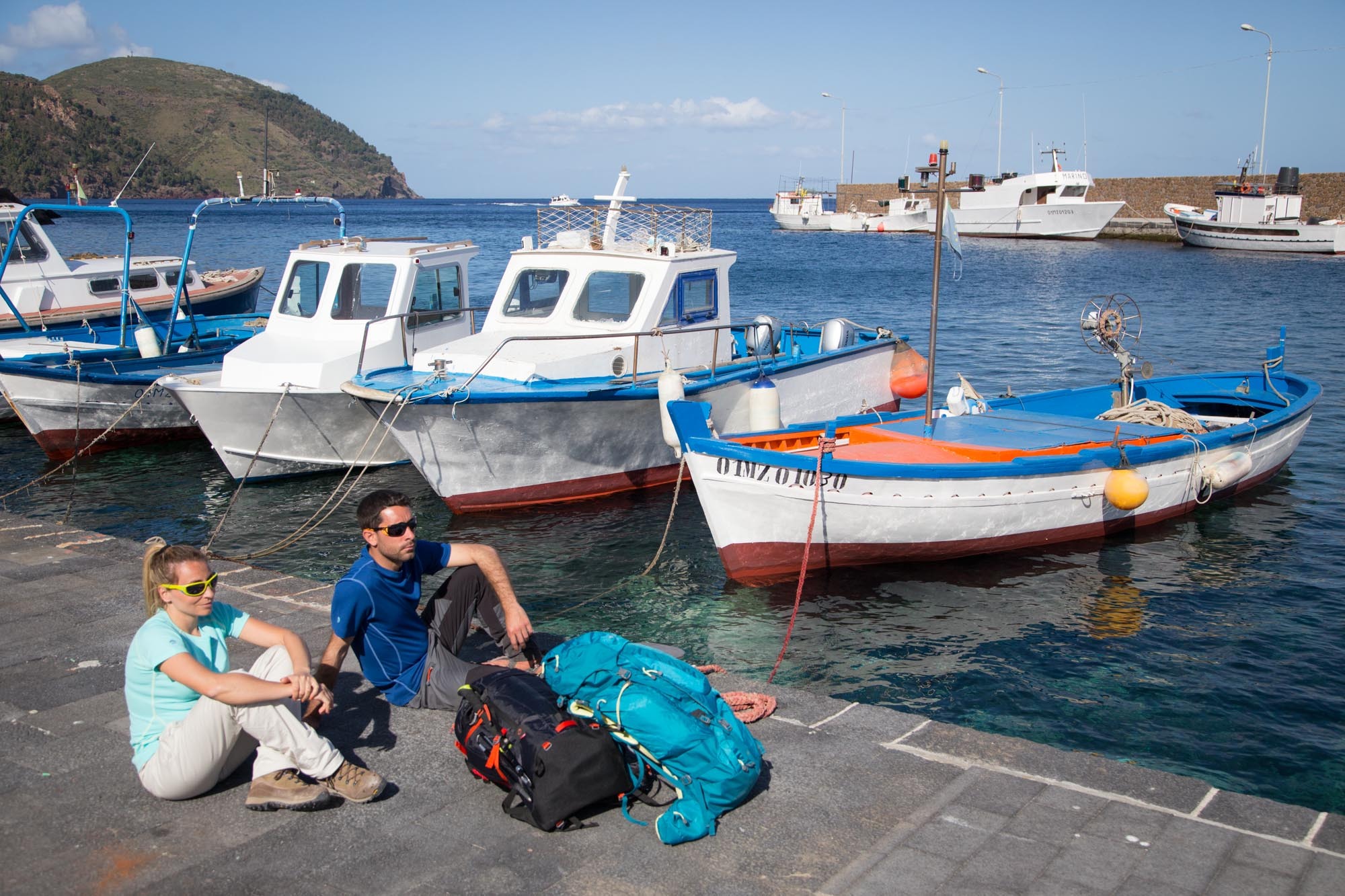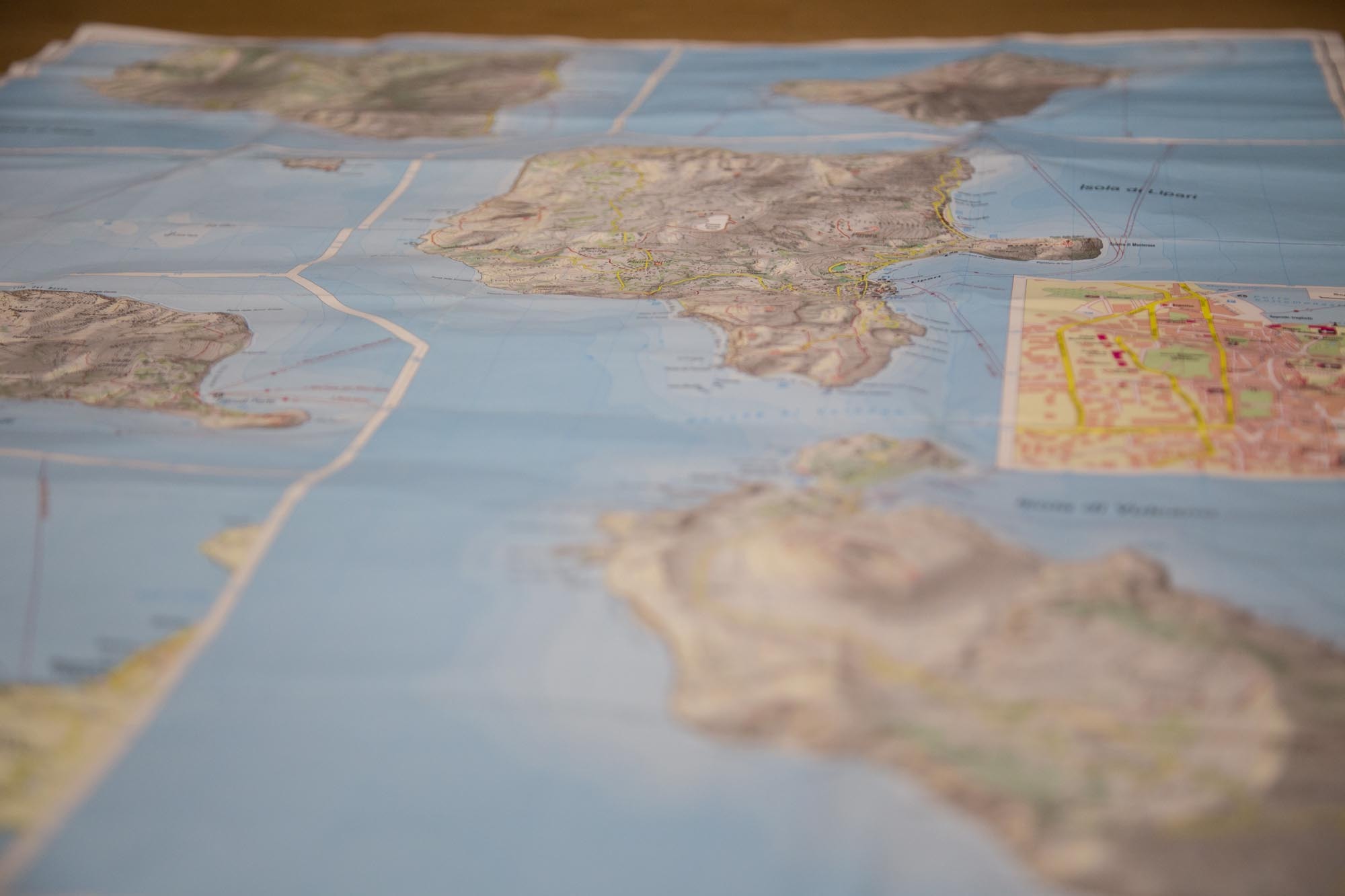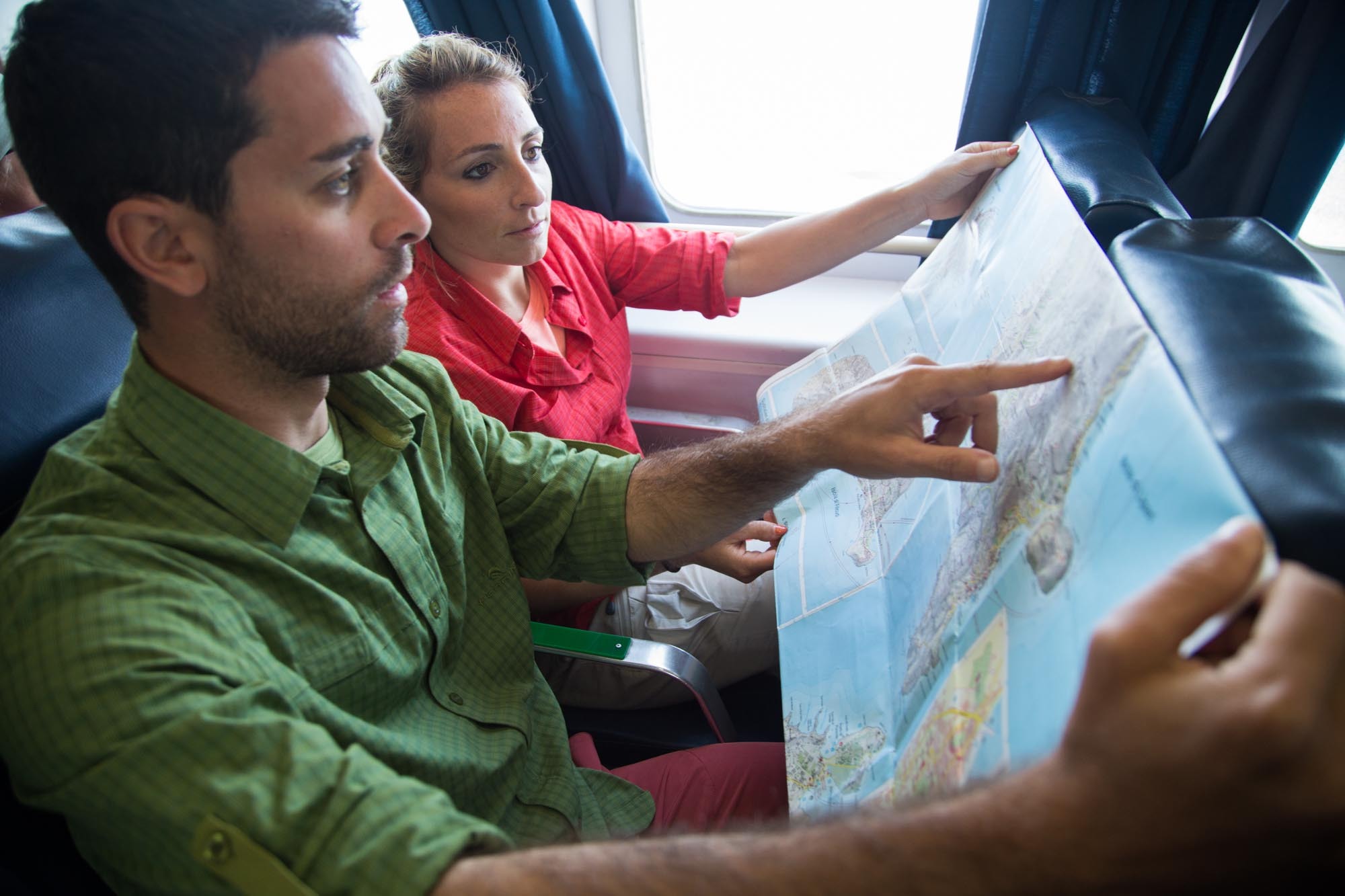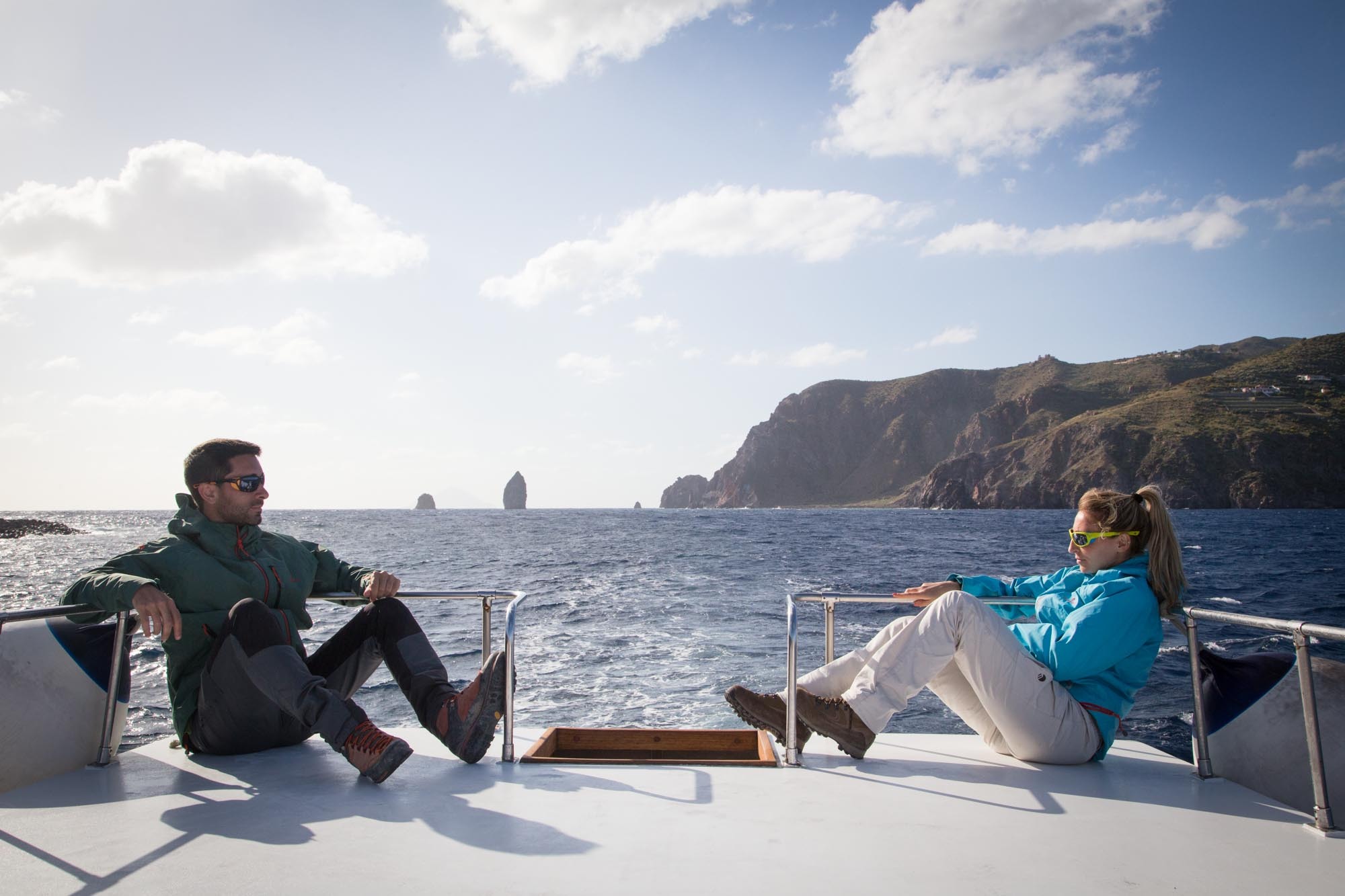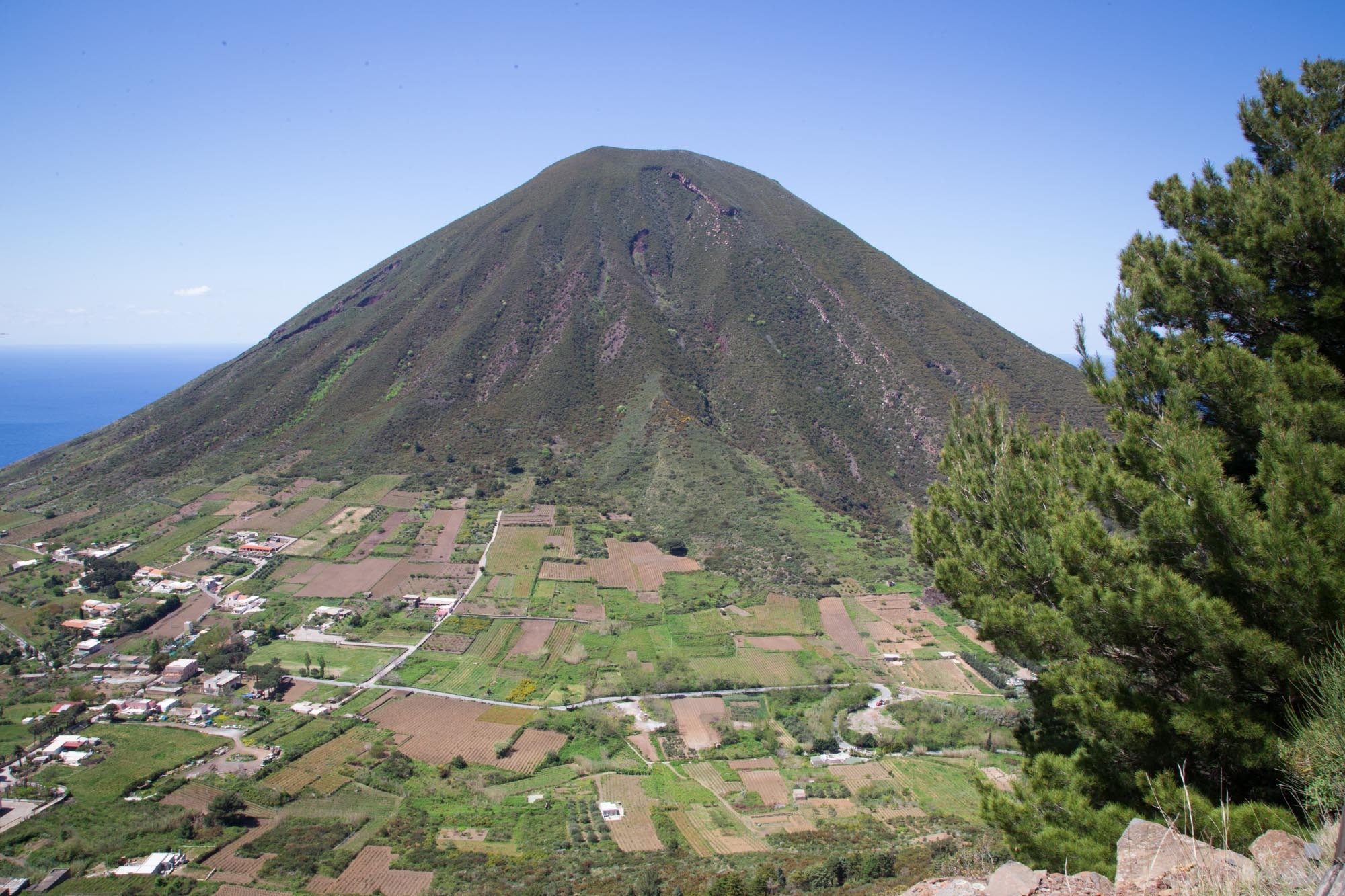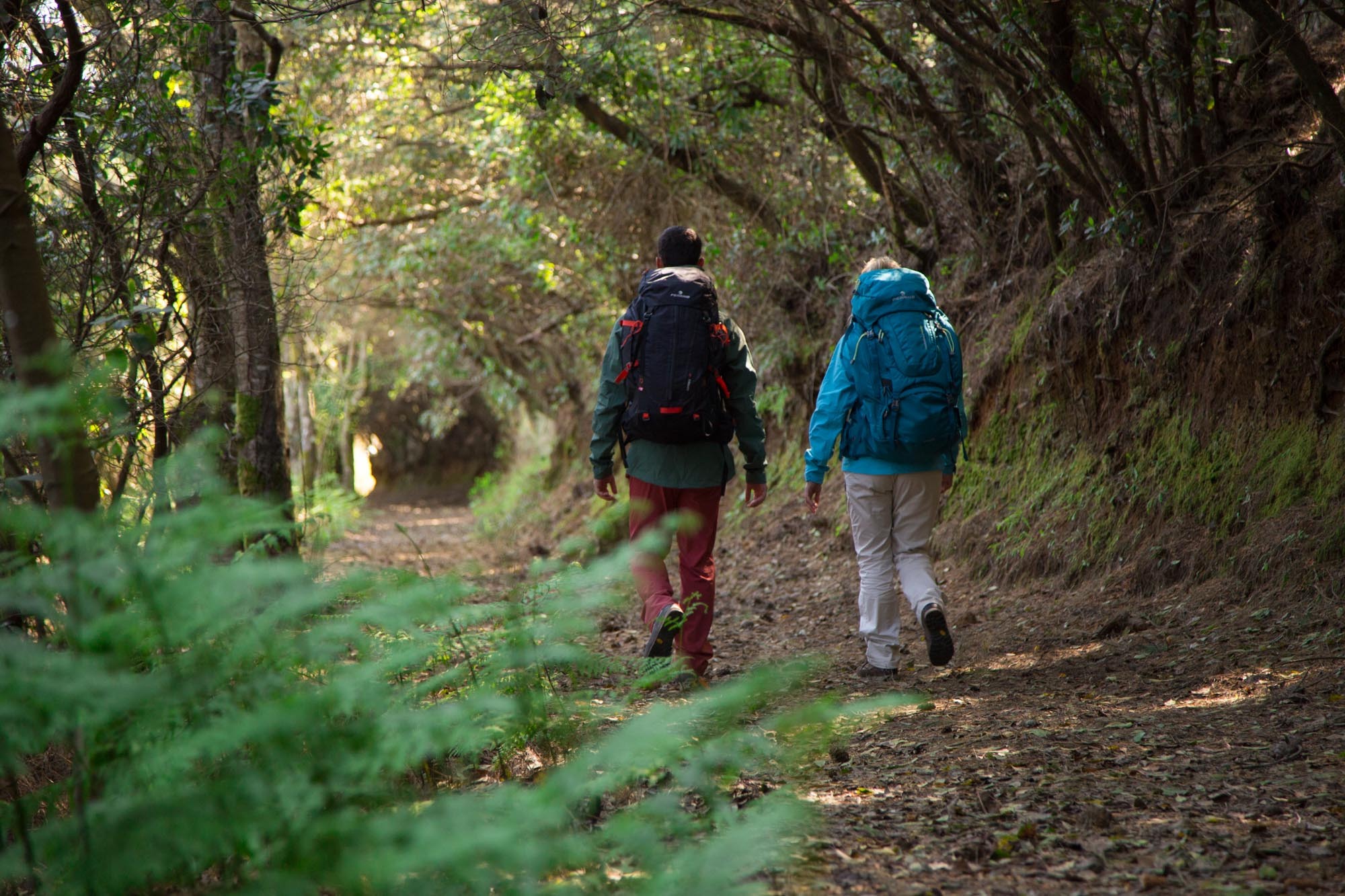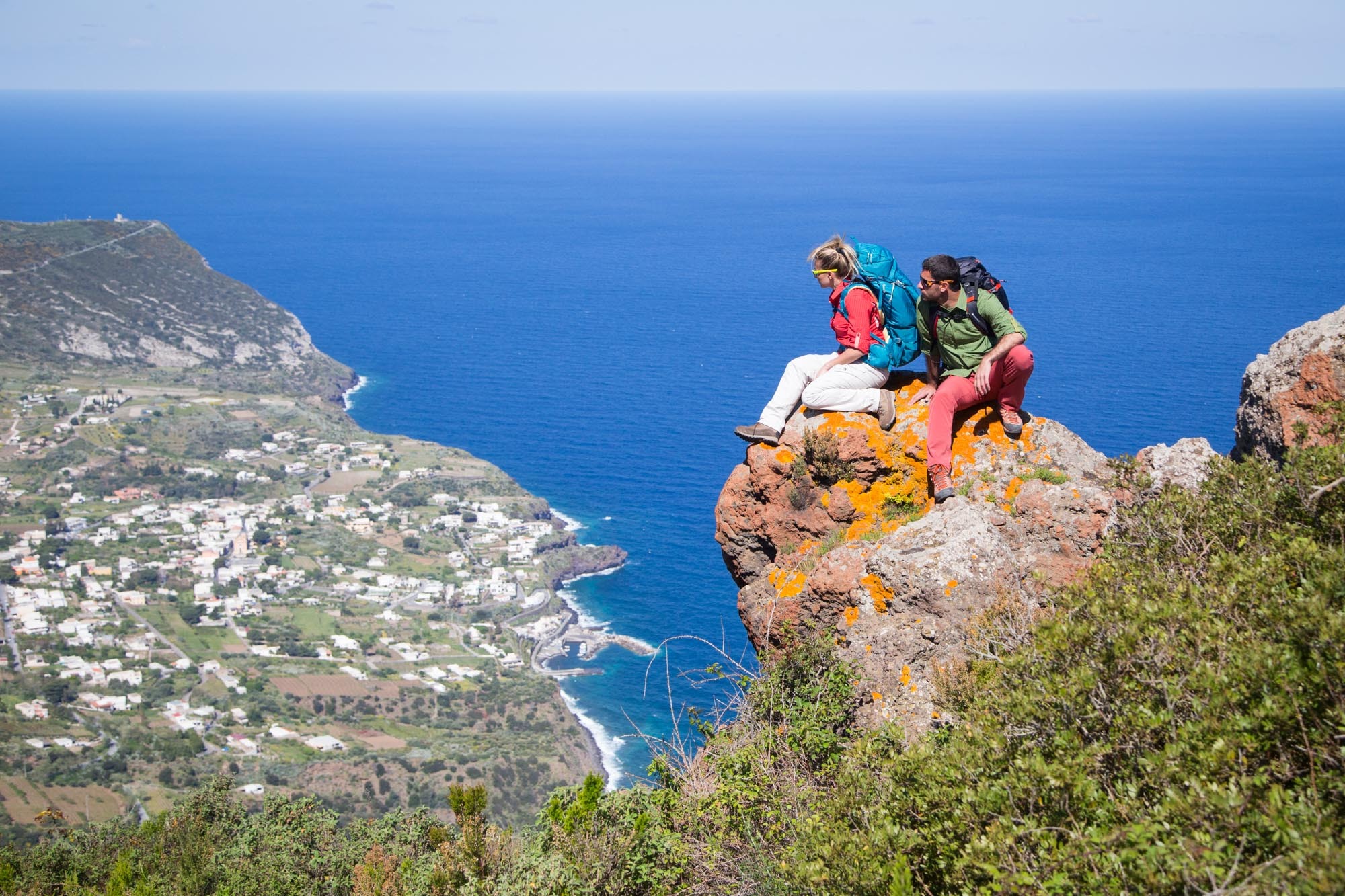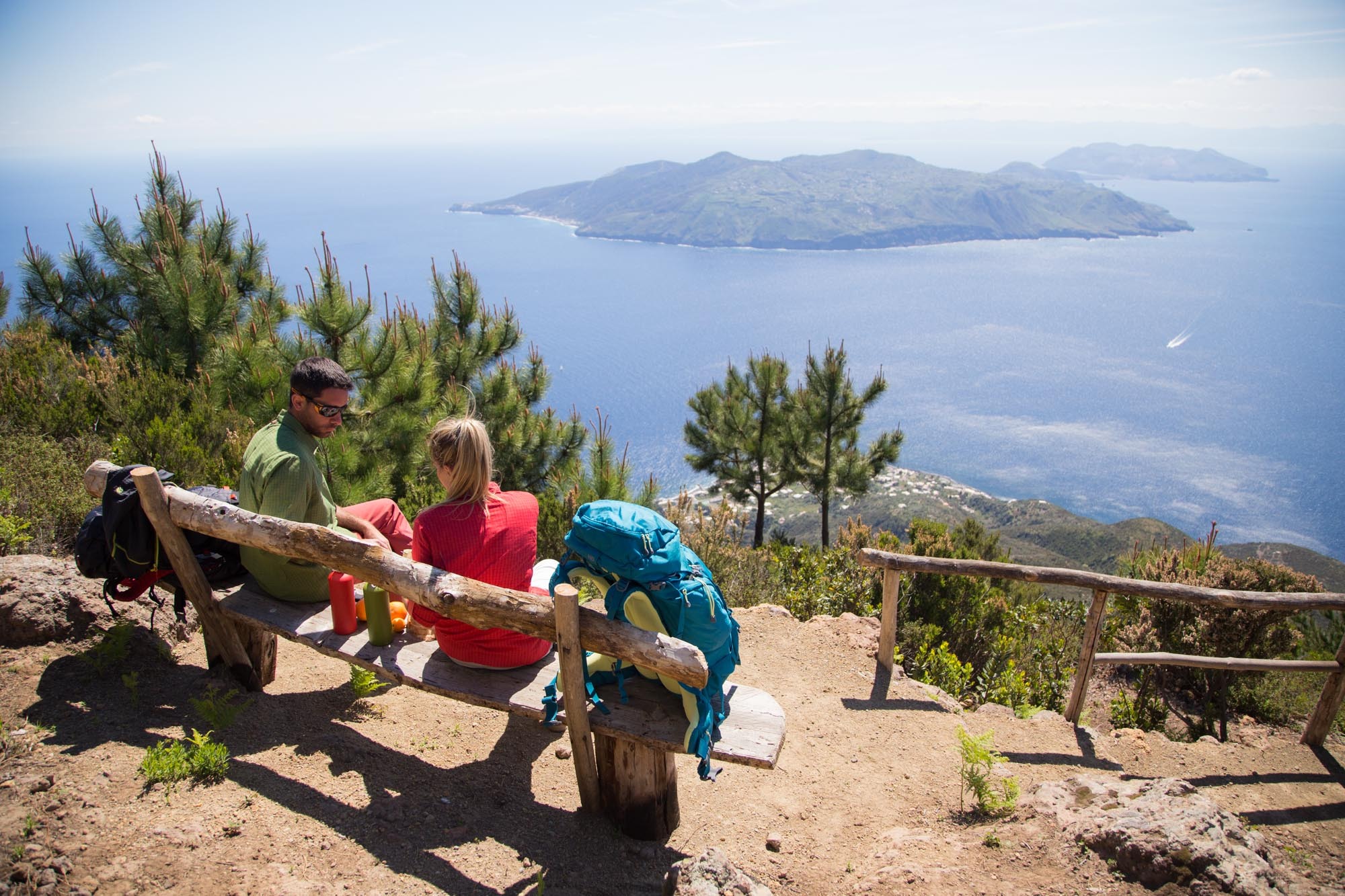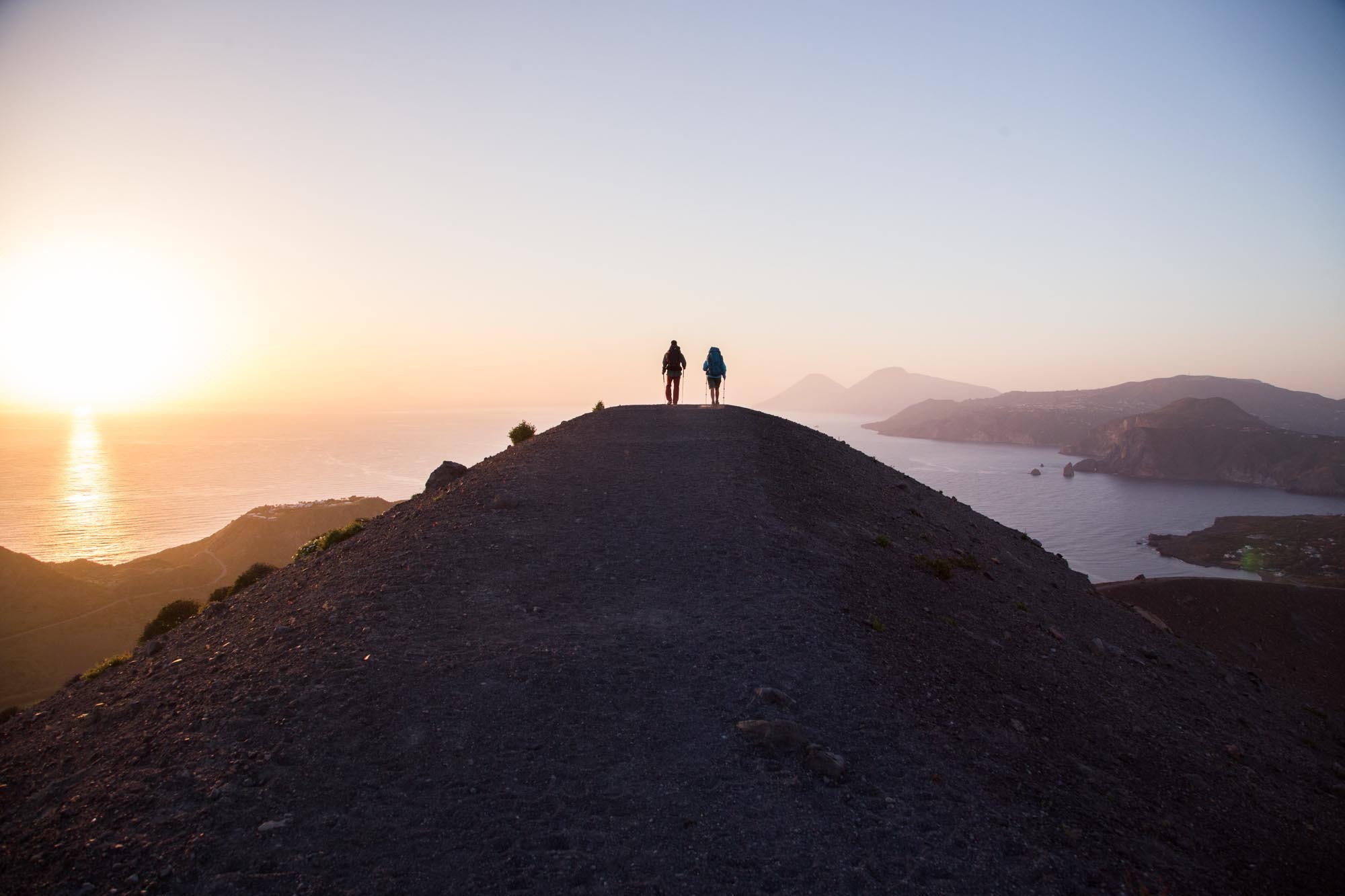
TREKKING IN THE AEOLIAN ISLANDS: THE ISLANDS AND THE BEST ITINERARIES TO ENJOY THE ISLANDS BETWEEN THE SEA AND THE WILD NATURE.
Nestled in the Tyrrhenian Sea, the Aeolian Islands adorn Sicily a few miles from its northeastern coast. Arranged in an arch, Alicudi, Filicudi, Salina, Lipari, Vulcano, Panarea and Stromboli are also called the “seven sisters” for the way they “look” at each other: from each of them it is possible to glimpse, amidst the indistinct blue of the sea and sky, the profile of at least one of the other islands, especially if you admire the view from the summit of one of them on days when there is a bit of wind, which is not uncommon here. It is precisely the presence of the wind, more or less powerful, that gives the name to these islands, whose roots are rooted in ancient mythology. But the Aeolian Islands are not only the kingdom of Aeolus, god of the winds, here the four elements are concentrated in all their strength: the fire that incessantly explodes from the mouth of Stromboli, here it flows into the intense blue of the sea, a sea rich in treasures (a deposit of corals of the most varied shapes was recently discovered) and along its path it crosses the black of the sciara, the "road", the bed of the lava made of rock and volcanic dust.
And it is Stromboli that reveals the nature of the archipelago: although different in age and character, the seven sisters are united by their volcanic origin dating back to the Quaternary. Traces of this activity can be easily observed today, not only in Stromboli, but also in Vulcano where the fumarolic activity on the edge of the main crater has continued without stopping since the last great eruption, that of 1890, giving very suggestive spectacles, and in Panarea, where gases escape underwater underwater off the Basiluzzo rock.
The archipelago therefore offers a concentration of nature to live, of experiences to try but also of food for thought: what is it that keeps the inhabitants of Stromboli from remaining on the island, despite the risks associated with the volcano? A small world apart where it is still nature with its times that shapes the life and philosophy of those who live there.
And it is for this intensity that writers and directors have drawn inspiration from the Aeolian archipelago for some famous works: Jules Vernes set the conclusion of “Journey to the Center of the Earth” in Stromboli; Rossellini with “Stromboli, Land of God” showed the world, in 1948, the face of these islands, until then unknown and remote; in 1961 Antonioni chose it for “L'Avventura” while in 1993 there was Caro Diario by Nanni Moretti. The film Il Postino, in 1994, set in Salina, will perhaps forever link the image of this island to the timeless Massimo Troisi but also, and rightly so, to poetry.
Although the archipelago is today a popular tourist destination, the most beautiful and evocative places remain the privilege of outdoor lovers who venture out to discover the most beautiful scenery and the most authentic corners.
Among the various sports that can be practiced here, in addition to trekking: mountain biking, snorkeling, kayaking, sailing, paragliding and even skiing on volcanic sand!
On each island there are trekking routes, below is a selection of those we recommend.
Volcano – Great Crater of Fossa
The crater is clearly visible upon arrival on the island and its summit can be easily reached by following the asphalt road that crosses the edge of the town. From the port, exit the hydrofoil, go left until you take the well-marked path on the left that leads to the start of the climb. Once you reach the edge of the crater you can observe the spectacle of the permanent fumarolic activity, which is proof of the liveliness of the volcano that is only apparently dormant. The ideal is to enjoy the moment in the company of a local guide who will tell you the story of the last great eruption, that of 1888, admiring the sunset and the beautiful view of the other islands.
Duration: approximately 3 hours
Difference in altitude: +390/-390m
The use of gaiters is recommended; a torch is mandatory for returning after sunset.
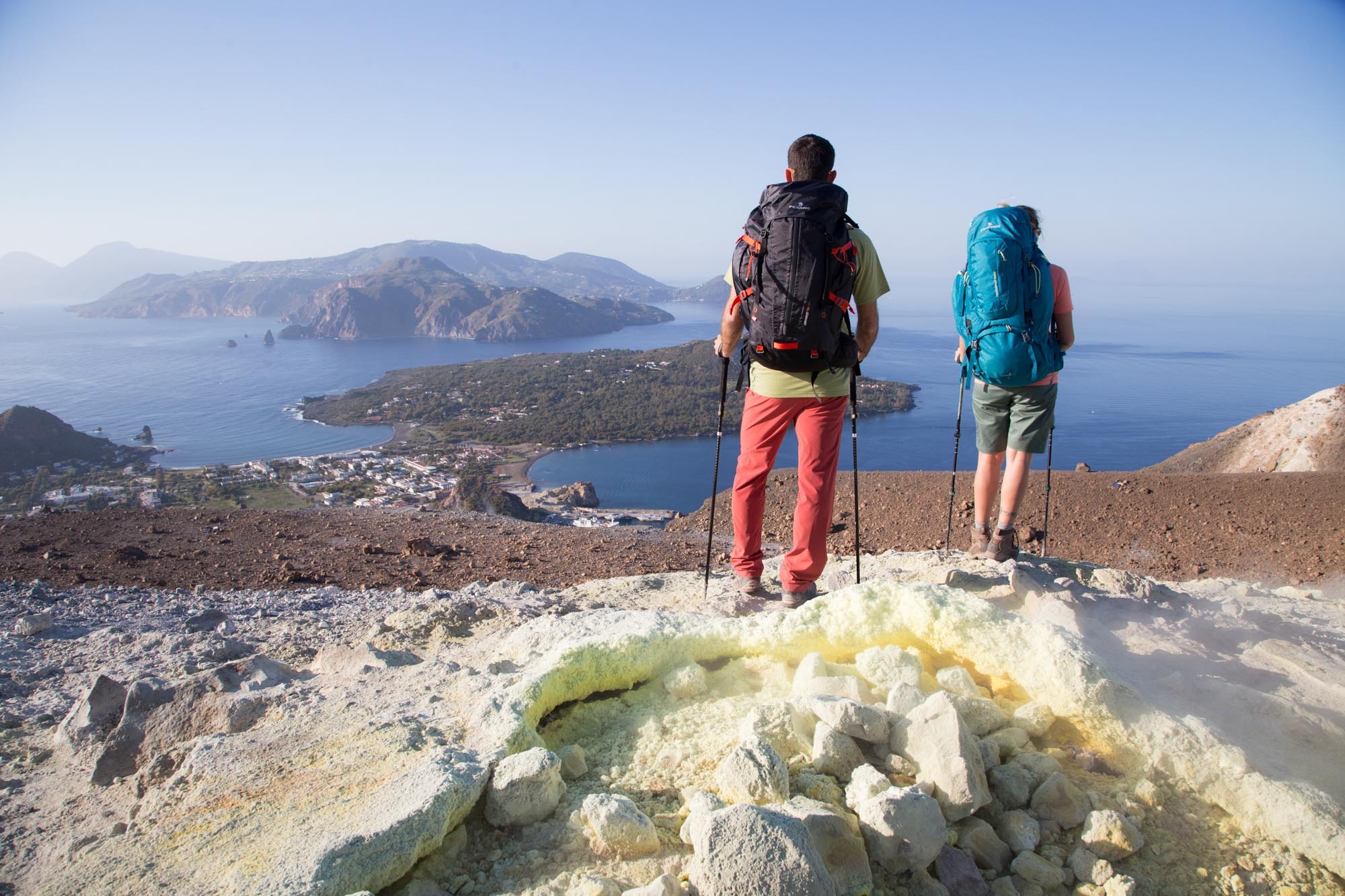
Lipari - Kaolin Quarries and San Calogero Thermal Baths
The complex geology of this island allows you to admire formations of kaolin, obsidian and pumice. A beautiful walk that goes into the island allows you to discover not only the geological aspects but also the historical and landscape ones.
Starting from Quattropani (reachable by taxi) you follow the path that leads to the kaolin quarries, a small canyon with walls with iridescent colors. Keeping on the path you reach the Terme di San Calogero, an ancient Roman site where hot water still flows today. A magnificent view of Salina accompanies the entire walk.
Duration: approximately 4 hours
Difference in altitude -300m/+200m
Since the route is not marked, if you are not accompanied, we recommend that you take the excursion to the Geophysical Observatory, which is much more accessible.
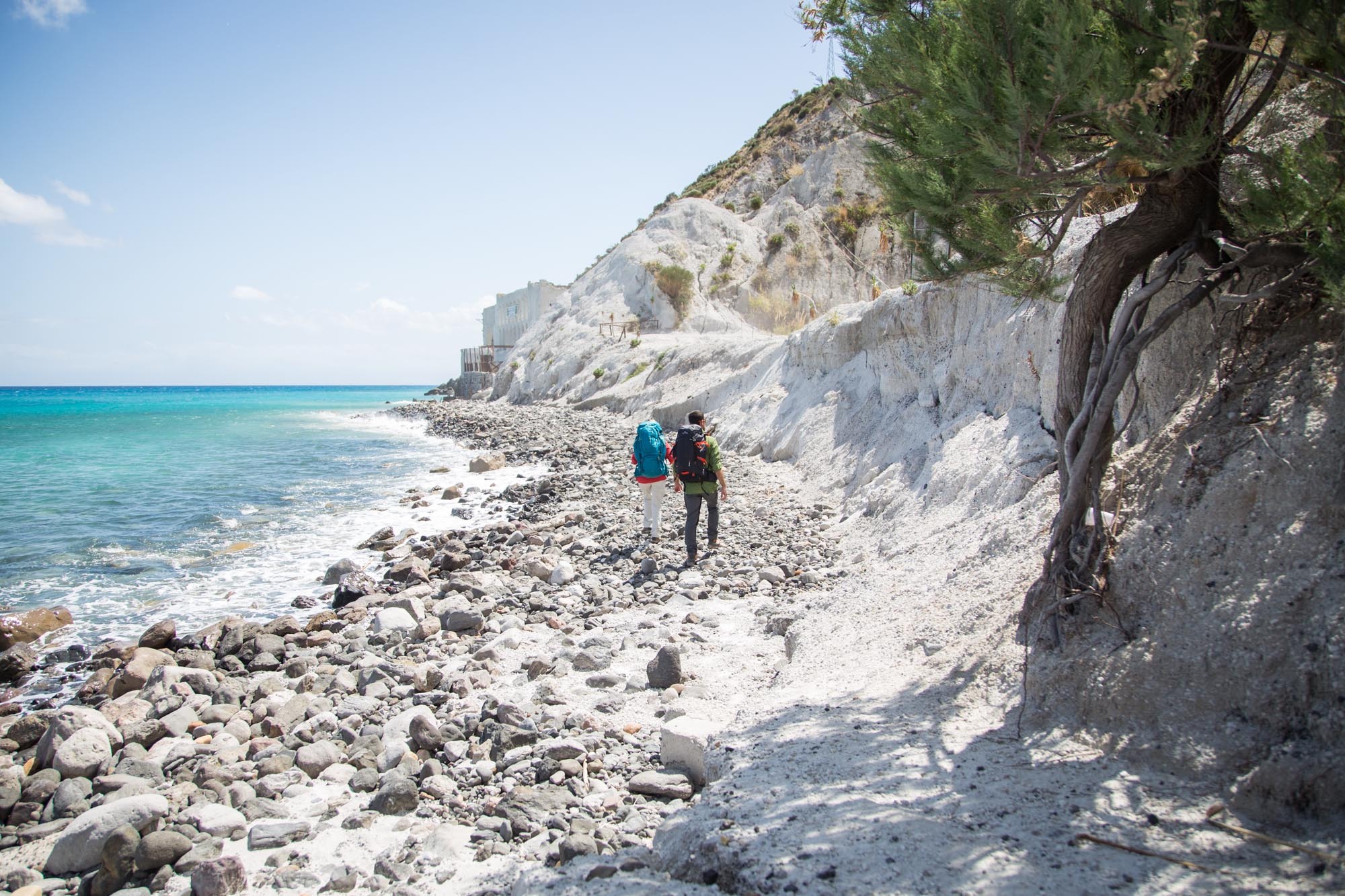
Salina - Mount Fossa delle Felci
Salina, which from afar appears to be made up of two distinct islands due to the two volcanic cones that compose it, is the “green” island, the richest in vegetation and the highest in altitude (962 metres above sea level).
From the sanctuary of Val di Chiesa (340 m) it is possible to reach the summit of Monte Fossa delle Felci, entering the natural reserve that surprises with its wooded environment. In addition to the typical Mediterranean scrub, very thick here, the summit is characterized by the presence of holm oaks, oaks and chestnut trees.
From the port of Santa Marina Salina the sanctuary can be reached by public bus or taxi.
We recommend a tour of the island and a stop at Pollara, a magnificent bay that offers a breathtaking view at sunset.
Duration: approximately 5 hours
Difference in altitude: +622m/-622m
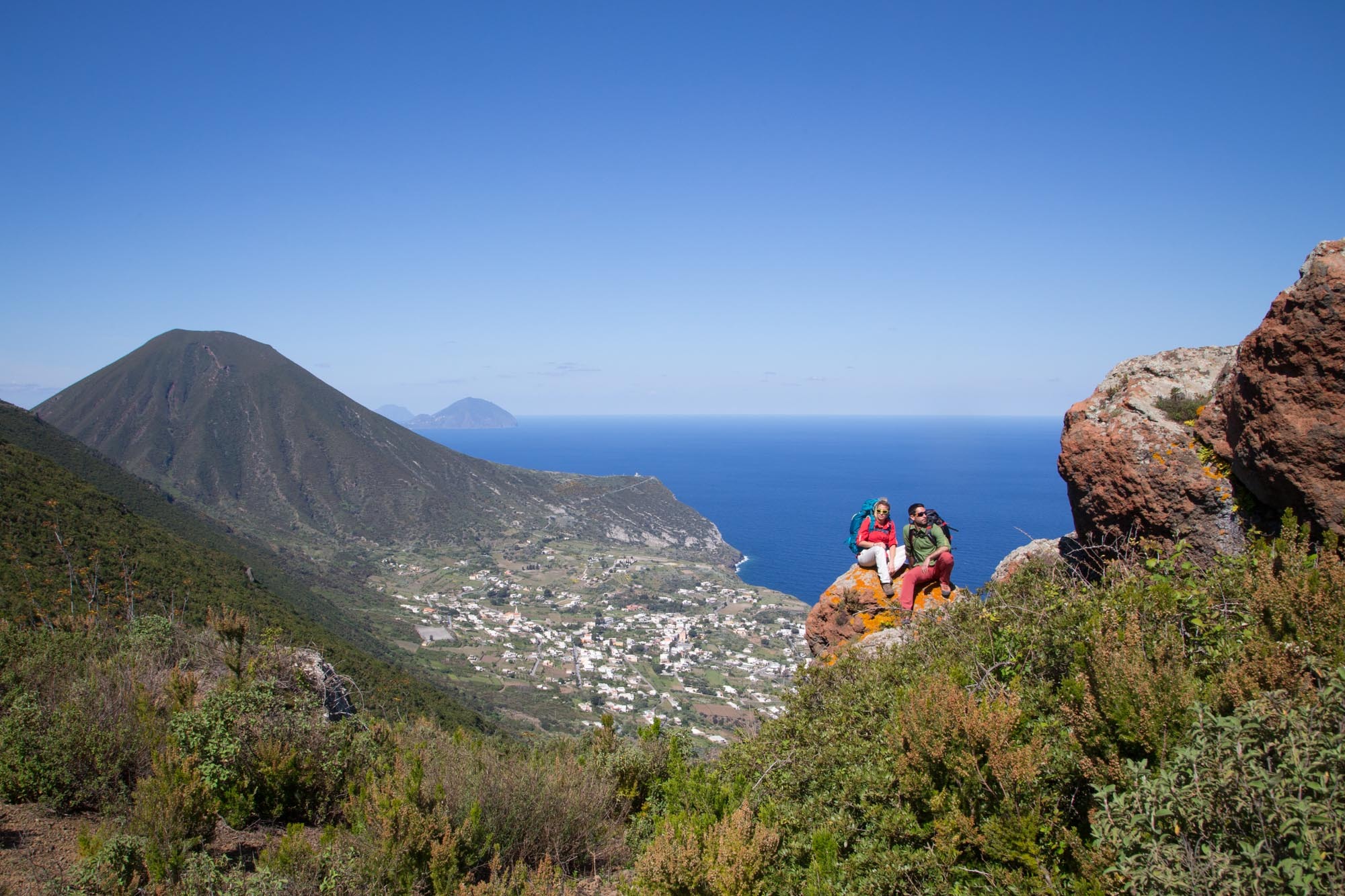
Panarea - Pizzo Corvo
Panarea is the oldest and most “chic” of the Aeolian Islands. The path that leads to the top begins through the maze of narrow streets that wind between the typical white houses adorned with brightly colored bougainvillea.
Around the summit of Pizzo Corvo you can admire a magnificent view of the rest of the Aeolian archipelago.
On the way back you have the opportunity to visit the prehistoric village on the promontory of Cala Junco, the most beautiful and most famous beach of the Aeolian Islands.
Duration: approximately 4 hours
Difference in altitude: +421 m /-421 m
Stromboli - Climb to the Crater
The “queen of the islands” is certainly the most surprising. The ideal proposal is to dedicate the morning to a boat trip to discover Ginostra and Strombolicchio, and the afternoon to climbing the volcano, at an altitude of 950 meters. The accompaniment of a volcanological guide offers the possibility of deepening the knowledge of one of the most famous volcanoes in the world, which surprises for the frequency of its explosions and has been in a permanent eruptive state for about two millennia.
The late evening return through the sandy ravines adds further charm to the excursion.
Duration: approximately 5 hours
Difference in altitude: +800/-800m
Access to the trails is subject to regulation by the Civil Protection, and may vary depending on the state of activity of the volcano.
For safety reasons, access to higher altitudes is subject to the accompaniment of authorized guides. It is advisable to have protective clothing for mid-mountain environments.
Filicudi - Mount Fossa of Ferns
One of the most remote and unspoiled islands.
The climb to the summit of Monte Fossa delle Felci, which takes its name from the plants that covered it in ancient times, today takes place through a stretch of heather and other Mediterranean species such as mastic, strawberry tree and broom.
From the top the view extends over Alicudi and the La Canna rock.
Duration: approximately 5 hours
Difference in altitude: + 771m/-771 m
Alicudi - Church of San Bartolo
This island with an almost perfectly rounded shape is one of the smallest and wildest of the archipelago, a little corner of paradise forgotten by the world where the only means of transport is the donkey. A beautiful excursion is the one that leads to the Church of San Bartolo (403 m), the only historical monument on the island that dates back to 1821. From here you can admire a magnificent view of the sea and the other islands.
Duration: approximately 3 hours 30'
Difference in altitude: +403m/-403m
General information
The best period to actively experience the Aeolian Islands, although not excluding winter, is the one that extends from the end of March to the end of October. However, considering that temperatures in August can exceed 30-35 °C, and that in this month they are a very popular destination, those looking for nature and tranquility are advised to reach the archipelago in the remaining part of the year. For hiking, the ideal period is therefore between March and July and between September and October.
Advice
Although the island destinations are considered by many to be “maritime”, it is advisable to be adequately equipped with a backpack, trekking shoes, poles and light clothing, with the addition of a good windbreaker for the excursion on Stromboli.
Also bring a headlamp with you, as the roads on some islands are not lit.
Don't forget sunscreen, a hat and water bottles to ensure you have an adequate water supply.
Any risks arising from Stromboli's volcanic activity will be communicated upon arrival on the island, and the excursion to the summit may be cancelled by the volcanological guide company.
Local contacts for excursions
Mediterranea Trekking is a tour operator founded in 2005 specialized in incoming with a sporting and naturalistic vocation.
A point of reference for twelve years of Terres d'Aventure, the main French tour operator in the “voyages d'aventure” sector, it creates packages dedicated to trekking covering the entire territory of Sicily and also those of Calabria, Puglia, Basilicata and Campania.
The proposed trips are made for small groups and always accompanied by a local guide who accompanies you throughout the trip, but also offers packages for individual customers (Free Tour) supported by a very detailed technical sheet, GPS tracks and relative cartography and possible 24-hour assistance from the staff, for any problem. The flagship product is an eight-day tour that winds between Etna and the Aeolian Islands, allowing a complete immersion in the world of Italian volcanoes.
Other proposals include gulet cruises to the Aeolian Islands, trekking tours in Western Sicily (Egadi), and trekking tours in Baroque Sicily (Syracuse, Pantalica). The staff is available to build personalized tours for groups or individuals, including sports and nature activities and even day trips.
Pics: Alfredo Croce - Pillow Lab

